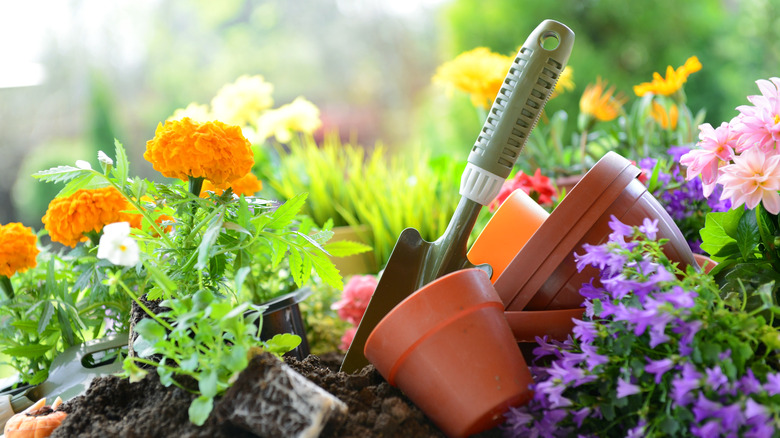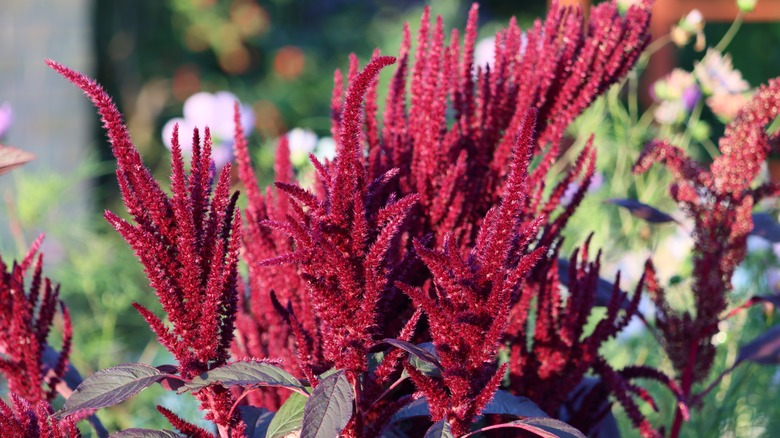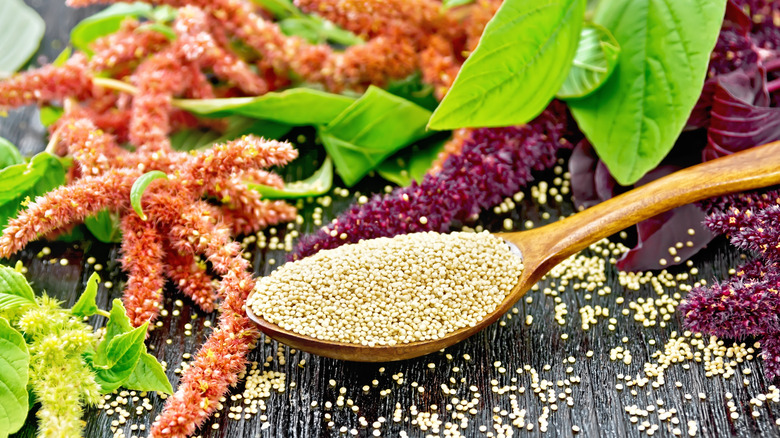The Easy-To-Grow Flower Pinterest Is Loving For Spring Gardens
Whether you're putting together a cut flower garden for making bouquets or creating a harmonious annual border for your walkway, texture is almost as important a consideration as color and scent. Unexpected flower spikes and elegant seed heads add a special something to floral displays and elevate containers and garden beds. Amaranth, the unique and beautiful plant beloved by Pinterest, does all this and more, and it is also one of the easiest flowers you can grow.
An excellent option for edimental gardening, many species of amaranth are as delicious, nutritious, and useful as they are beautiful. Amaranth means unfading flower, referencing its ability to keep its color even when dried, a feature which makes it ideal for dried flowers and providing winter and autumn interest. A traditional staple food in Central America and Southwestern parts of North America, this veggie survived being banned by Spanish conquistadors and is once again flourishing, both in its native range and around the world.
Growing amaranth
Growing amaranth (Amaranthus spp.) is shockingly simple. Generally grown as a warm-season annual, it flourishes during summer months in USDA zones 2 through 11. Full sun and well-draining soil with a neutral pH are a must for helping the plants reach their full height and potential. This crop dislikes overly soggy soil, and after it is established it can be quite drought tolerant, making it a perfect option for gardeners who want to conserve water.
Unlike many seeds that need to be started indoors, direct sowing is usually recommended for amaranth. Bury seed about half an inch deep and water them in well. Don't begin planting until all danger of frost has passed, as amaranth is not frost tolerant. And remember to use a nitrogen-rich fertilizer for best results. Many varieties can reach over 5 feet and have large flower panicles, so forgetting to stake your amaranth is a big mistake. The ideal time to harvest amaranth for cut flowers is when about 75% of the flowers have opened.
Popular amaranth varieties and uses
One of the most popular varieties of amaranth for borders and cut flower gardens is love-lies-bleeding (Amaranthus caudatus), as its elegant drooping flower panicles are excellent for both fresh and dried bouquets. While love-lies-bleeding is known for its distinctive and vibrant red flowers, other cultivars of Amaranthus caudatus come in shades of greens, honey browns, and even pinks. These aren't just attractive to humans either; they're also a hit with butterflies and other pollinators.
Another popular type of amaranth for growing in decorative border gardens is Joseph's coat (Amaranthus tricolor). Unlike love-lies-bleeding and other types of Amaranthus caudatus, Joseph's coat is grown primarily for its beautiful and multicolored foliage, which earned it the nickname "summer poinsettia." Amaranth's uses don't stop there, and some species also make excellent natural and food-safe dyes. Amaranthus cruentus, also known as Hopi red dye amaranth, has beautiful purple foliage and deep red flower panicles that aren't just perfect for cut flowers, but are also traditionally used for coloring piki bread, a type of cornmeal wafer. The leaves can also be used as a fabric dye.


